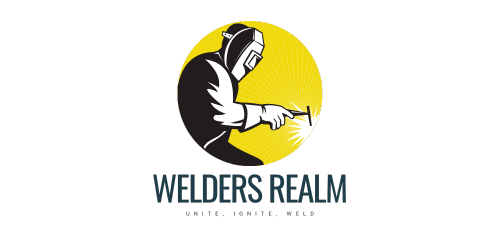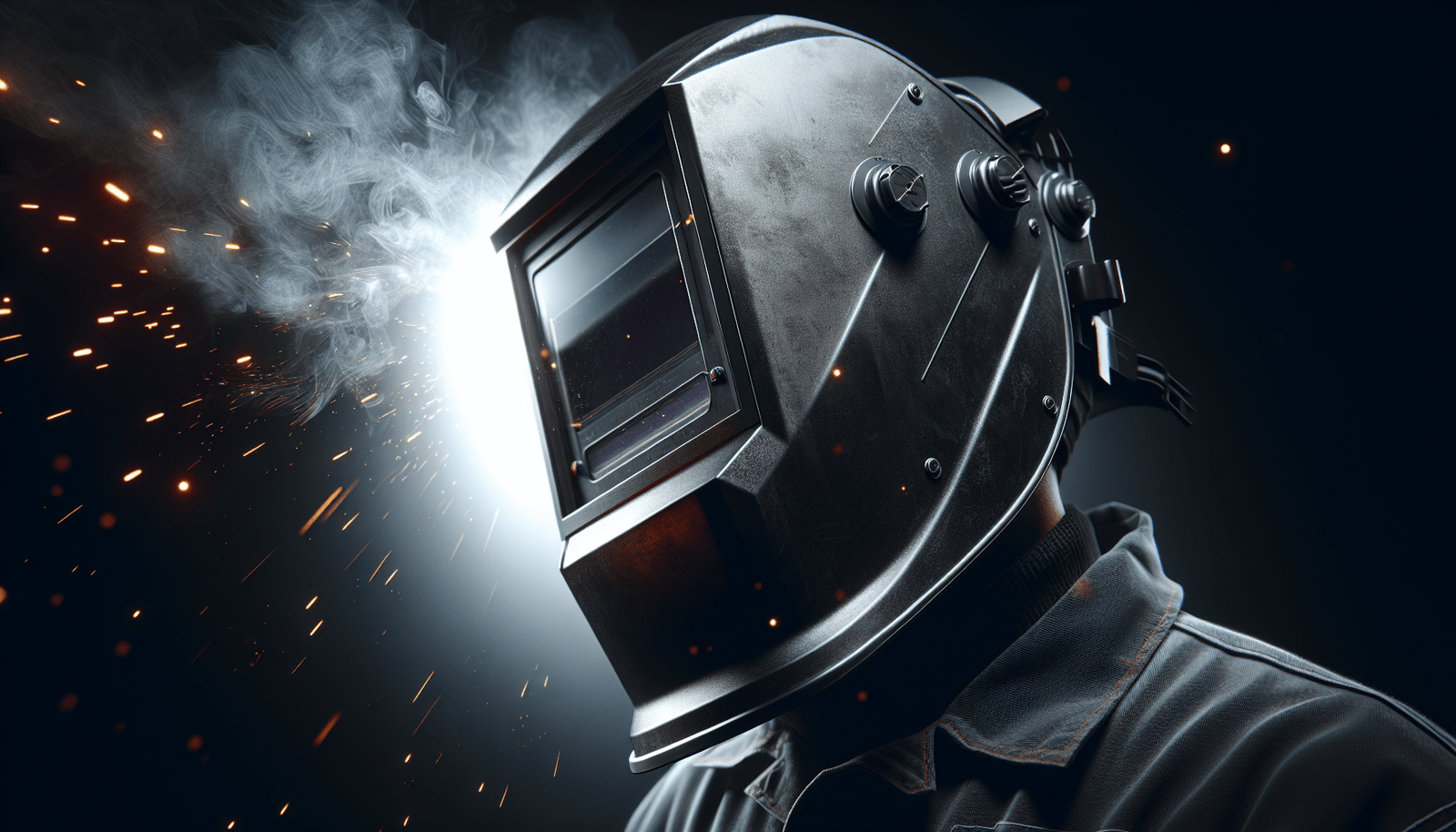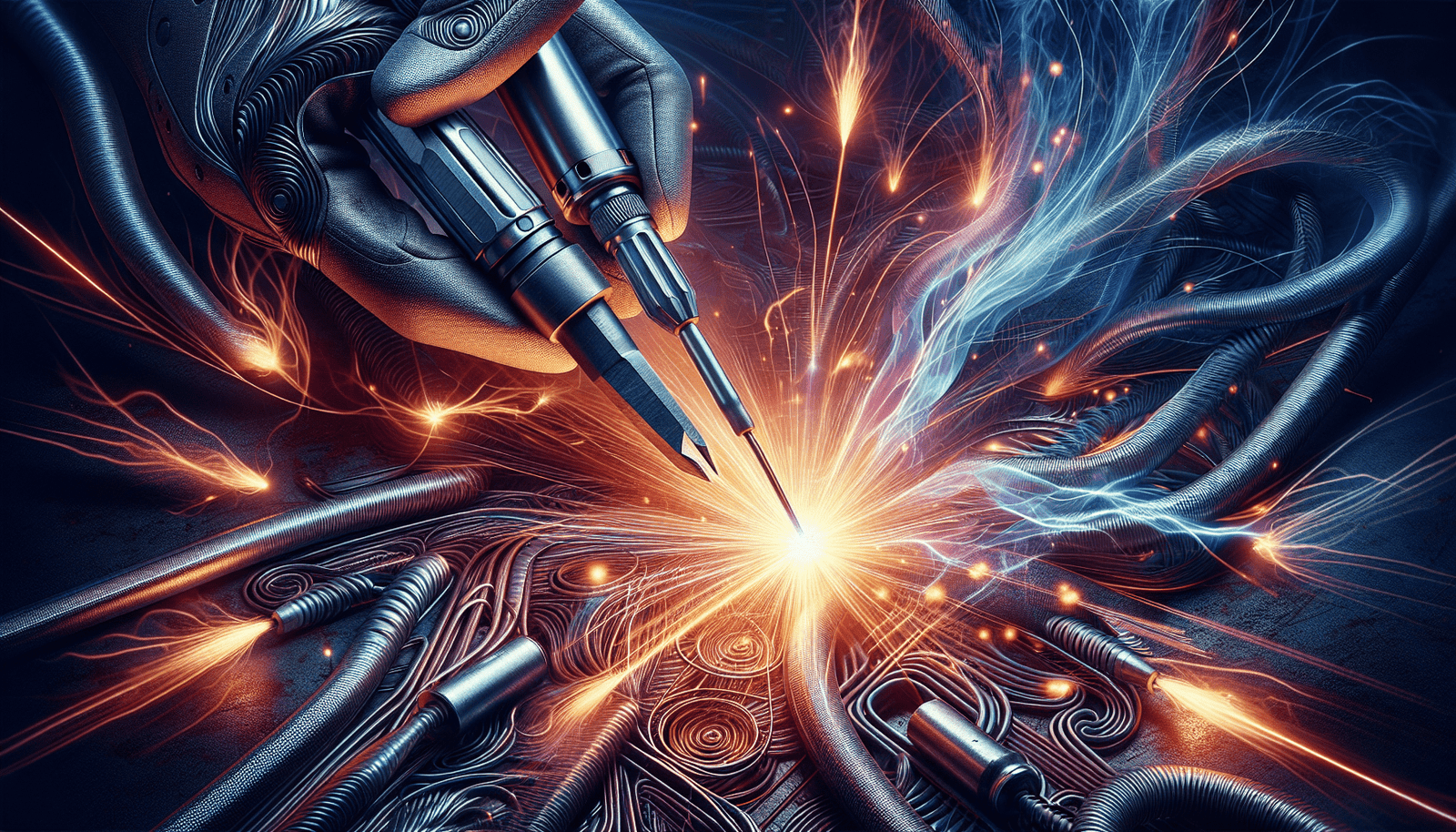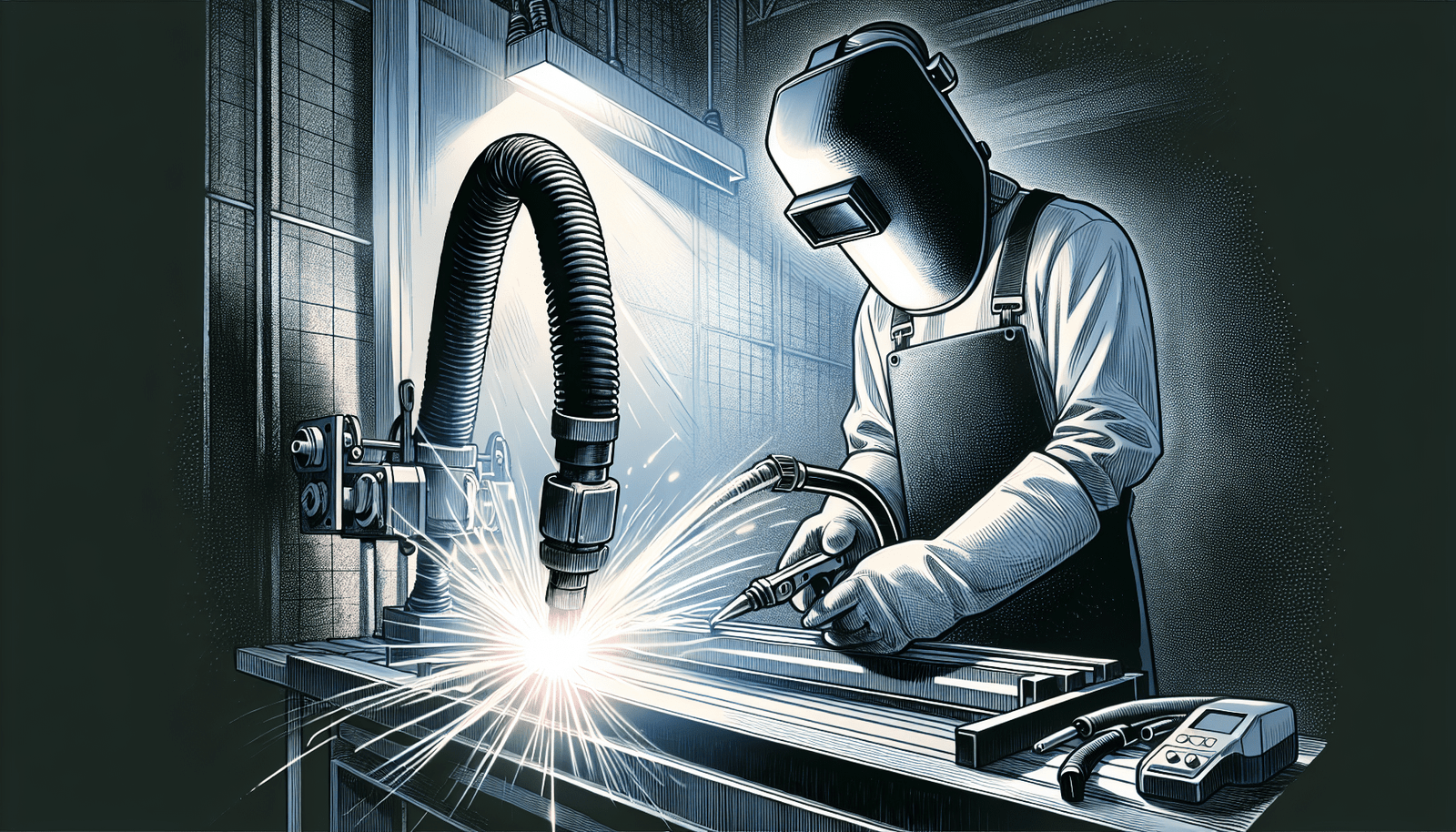Are you in the market for a welding machine but unsure which one to choose? Look no further! In this article, we will explore the most popular welding machines currently available. Whether you are a professional welder or a DIY enthusiast, we have got you covered. From MIG welders to TIG welders, we will provide you with all the information you need to make an informed decision. So, let’s dive in and discover the best welding machines on the market that will suit your specific welding needs!
Understanding Different Types of Welding Machines
Welding machines are essential tools used in various industries and by hobbyists alike. They are used to join different types of metal components together through the application of heat and pressure. If you are looking to invest in a welding machine, it is important to understand the different types available in the market. Each type of welding machine has its own advantages and is suitable for specific welding processes. In this article, we will explore the different types of welding machines, their applications, and the top models available in the market.
Essential information about welding machines
Before delving into the specifics of each type of welding machine, it is important to understand some general information about welding machines. Welding machines, also known as welders, provide a power source that generates an electrical arc. This arc produces the heat necessary to melt the metal being welded, allowing it to fuse together when cooled. Welding machines can be categorized based on the type of welding process they are designed for, such as MIG, TIG, stick, flux-cored, plasma cutting, multi-process, submerged arc, and laser welding.
How the welding process works
Regardless of the type of welding machine being used, the welding process follows a similar principle. When a welding machine is turned on, it generates an electrical current that passes through the welding electrode or wire and the metal being welded, creating an electrical arc. The heat produced by the arc melts the metal, creating a molten pool. As the pool solidifies, it forms a bond between the two metal pieces, creating a strong joint. The welding process requires precision and skill, as the temperature and speed must be controlled to ensure a successful weld.
Different types of welding processes
There are several different types of welding processes, each with its own unique characteristics and applications. The type of welding process used depends on factors such as the type of metal being welded, the thickness of the metal, and the desired strength of the weld. The most common types of welding processes include MIG (Metal Inert Gas) welding, TIG (Tungsten Inert Gas) welding, stick welding, flux-cored welding, plasma cutting, multi-process welding, submerged arc welding, and laser welding.
MIG (Metal Inert Gas) Welding Machines
Overview of MIG welding
MIG welding is one of the most widely used welding processes, known for its ease of use and versatility. It involves the use of a continuous wire electrode that is fed through a welding gun and into the weld pool. MIG welding machines provide a shielding gas, usually a mixture of argon and carbon dioxide, to protect the weld from atmospheric contamination. MIG welding is suitable for both thin and thick metals and can be used to weld a variety of materials, including steel, stainless steel, and aluminum.
Popular models and manufacturers of MIG welders
Several manufacturers produce high-quality MIG welding machines. Some of the popular models include the Lincoln Electric Power MIG 210 MP, Miller Millermatic 211 MIG Welder, and Hobart Handler 210 MVP. These machines are known for their reliability, ease of use, and superior weld quality. When choosing a MIG welding machine, it is important to consider factors such as amperage range, duty cycle, wire-feed speed control, and welding capabilities.
Applications and advantages of MIG welding
MIG welding is widely used in various industries, including automotive, construction, and manufacturing. Its versatility makes it suitable for a wide range of applications, such as fabricating metal structures, repairing machinery, and creating ornamental metalwork. One of the key advantages of MIG welding is its speed, as it allows for fast and efficient welding. It also provides a clean and precise weld, with minimal spatter. Additionally, MIG welding machines are user-friendly and can be easily operated by beginners.
TIG (Tungsten Inert Gas) Welding Machines
Basics of TIG welding
TIG welding, also known as GTAW (Gas Tungsten Arc Welding), is a precise and high-quality welding process that is commonly used for critical applications. TIG welding machines use a non-consumable tungsten electrode to create an electrical arc that generates the necessary heat for welding. Fillers are added separately into the molten pool to create the weld. TIG welding requires a shielding gas, typically argon, to protect the weld from atmospheric contamination. It is known for producing clean and aesthetically pleasing welds.
Notable TIG welding machines in the market
When it comes to TIG welding machines, there are several notable models available in the market. The Lincoln Electric Square Wave TIG 200 is a popular choice among professionals, offering advanced features and excellent performance. The Miller Dynasty 280 DX is another top-rated TIG welding machine known for its versatility and precision. When selecting a TIG welding machine, it is important to consider factors such as amperage range, AC/DC capabilities, pulse settings, and ease of use.
The usage and benefits of TIG welding
TIG welding is commonly used in industries that require high-quality welds and exceptional precision, such as aerospace, automotive, and medical. It is suitable for welding a wide range of metals, including stainless steel, aluminum, copper, and titanium. TIG welding offers several benefits, including the ability to control heat input, resulting in minimal distortion and warping. It also produces welds with excellent mechanical properties, high integrity, and good aesthetics. TIG welding is often preferred for critical applications where weld quality is paramount.
Stick Welding Machines
Understanding the stick welding process
Stick welding, also known as Shielded Metal Arc Welding (SMAW) or stick electrode welding, is a versatile and widely used welding process. Stick welding machines use a consumable electrode coated in flux, which provides shielding gases and fluxing elements when burned. The electrode is connected to the positive terminal of the welding machine, creating an arc that melts the electrode and the base metal. The flux coating produces a slag that shields the molten pool and solidifies to form a protective layer on the weld.
Highly-rated stick welding machines
When it comes to stick welding machines, there are several highly-rated models available in the market. The Lincoln Electric AC225S is a popular choice among hobbyists and DIY enthusiasts, offering a compact and reliable machine at an affordable price. For professional use, the Miller Thunderbolt 160 and ESAB Fabricator 141i are known for their superior welding performance and durability. When selecting a stick welding machine, it is important to consider factors such as amperage range, duty cycle, electrode compatibility, and portability.
Where and why to use stick welding
Stick welding is a versatile welding process that can be used in various applications and environments, both indoors and outdoors. It is commonly used in the construction industry for welding structural steel, pipelines, and heavy machinery. Stick welding is also used for repairs and maintenance work, as it can be easily performed on rusty or dirty metals. Another advantage of stick welding is its ability to produce strong welds even on thick metals, making it suitable for heavy-duty applications.
Flux-Cored Welding Machines
The process of flux-cored welding
Flux-cored welding is a variation of MIG welding that uses a continuously fed electrode with a flux-filled core. The flux provides both shielding gases and fluxing elements, eliminating the need for an external shielding gas. The flux-cored welding machine generates an electrical arc that melts the electrode and the base metal, creating a weld pool. As the weld cools, the flux solidifies to form a protective slag. Flux-cored welding is known for its high deposition rates and deep penetration capabilities.
Leading flux-cored welding machines
Several leading manufacturers produce high-quality flux-cored welding machines. The Hobart Handler 140 and Lincoln Electric EasyMIG 140 are popular choices among hobbyists and beginners, offering ease of use and reliable performance. For professional use, the Miller Millermatic 252 and ESAB Rebel EMP 215ic are known for their advanced features and versatility. When selecting a flux-cored welding machine, it is important to consider factors such as amperage range, wire-feed speed control, duty cycle, and portability.
Advantages of using flux-cored welding
Flux-cored welding offers several advantages over other welding processes. It is a versatile process that can be used for both thin and thick metals, providing excellent penetration and weld quality. Flux-cored welding machines are also suitable for outdoor use, as the flux provides a shielding gas that protects the weld from atmospheric contamination. This makes flux-cored welding ideal for construction, fabrication, and repair work in the field. Additionally, flux-cored welding machines are easier to use compared to other processes, making them suitable for beginners.
Plasma Cutting Machines
Introduction to plasma cutting
Plasma cutting machines are used to cut through metal using a high-velocity jet of ionized gas, known as plasma. The plasma cutting machine generates an electrical arc that passes through a small orifice in the cutting torch, ionizing the gas and creating plasma. The plasma, at temperatures exceeding 20,000 degrees Celsius, melts and blows away the metal, allowing for clean and precise cuts. Plasma cutting machines are widely used in industries such as automotive, metal fabrication, and construction.
Top plasma cutting machine models
Several top-rated plasma cutting machine models are available in the market. The Hypertherm Powermax45 XP is a popular choice among professionals, offering exceptional cutting performance and versatility. The Miller Spectrum 625 X-Treme is another highly-regarded plasma cutting machine known for its reliability and portability. When selecting a plasma cutting machine, it is important to consider factors such as cutting capacity, duty cycle, power source requirements, and ease of use.
Applications and advantages of plasma cutting
Plasma cutting is a versatile cutting process that can be used on various types of metal, including stainless steel, aluminum, and copper. It is commonly used in industries that require precise and efficient metal cutting, such as HVAC fabrication, automotive restoration, and metal artwork. Plasma cutting offers several advantages, including high cutting speeds, minimal heat-affected zones, and the ability to cut through thicker materials compared to other cutting methods. Additionally, plasma cutting machines are relatively easy to use and require minimal setup time.
Multi-process Welding Machines
The versatility of multi-process welding
Multi-process welding machines, also known as combination welders or all-in-one welders, are designed to perform multiple welding processes using a single machine. These machines are capable of performing MIG, TIG, stick, and sometimes even flux-cored welding processes. Some advanced models also offer additional capabilities, such as plasma cutting or gouging. Multi-process welding machines provide versatility and convenience, allowing welders to switch between different welding processes without needing separate machines.
Top-rated multi-process welding machines
Several top-rated multi-process welding machines are available in the market. The Lincoln Electric PowerMIG 210 MP is a highly-regarded machine known for its versatility and user-friendly interface. The Miller Multimatic 215 and ESAB Rebel EMP 215ic are also popular choices among professionals, offering superior welding performance and advanced features. When selecting a multi-process welding machine, it is important to consider factors such as welding capabilities, amperage range, duty cycle, ease of use, and portability.
The convenience and efficiency of multi-process welding
Multi-process welding machines offer several advantages over individual welding machines. They provide convenience and save space, as welders only need to invest in a single machine instead of multiple machines for different welding processes. Multi-process welding machines are also more cost-effective in the long run, as they eliminate the need for separate machines and reduce setup time. Additionally, these machines are often equipped with advanced features and technology that improve welding performance and efficiency.
Submerged Arc Welding Machines
Exploring submerged arc welding
Submerged arc welding (SAW) is a welding process that utilizes a continuously fed wire electrode and a granulated flux as a shielding medium. The welding machine generates an electrical arc between the wire electrode and the base metal, and the flux provides a protective shield over the weld pool. Submerged arc welding is known for its high deposition rates, deep penetration capabilities, and excellent weld quality. It is commonly used in industries such as shipbuilding, bridge construction, and pressure vessel manufacturing.
Popular submerged arc welding machines
Several popular submerged arc welding machines are available in the market. The Lincoln Electric Power Wave AC/DC 1000 SD is a highly-regarded machine known for its advanced features and exceptional performance. The Miller SubArc DC 1000 and ESAB A6/A2 PEK Controller are also top-rated machines, offering reliable welding performance and versatility. When selecting a submerged arc welding machine, it is important to consider factors such as welding capacity, power source requirements, control options, and ease of use.
Applications and reasons to use submerged arc welding
Submerged arc welding is commonly used in applications that require high-quality and high-volume welding. It is suitable for welding thick materials, making it ideal for heavy fabrication work, such as the construction of ships, bridges, and pressure vessels. Submerged arc welding is known for its high welding speeds, cost-effectiveness, and minimal spatter. It also produces welds with excellent mechanical properties, low distortion, and minimal operator skill requirements. These advantages make submerged arc welding a preferred method in industries that require high productivity and quality.
Laser Welding Machines
Insight into laser welding
Laser welding is a precise and high-energy welding process that uses a concentrated laser beam to join metal components together. The laser welding machine generates a laser beam that is focused on the weld joint, melting the metal and creating a weld. Laser welding machines can be categorized into two types: pulsed laser welding, which uses rapid pulses of energy, and continuous wave laser welding, which produces a continuous beam of energy. Laser welding is known for its high precision, minimal heat input, and narrow weld zones.
Most popular laser welding machines
Several popular laser welding machines are available in the market. The Trumpf TruLaser Station 7000 is a highly-regarded machine known for its versatility and advanced technology. The IPG Fiber Laser Welding System and Coherent EVO Mobile Laser Welding System are also top-rated machines, offering superior welding performance and reliability. When selecting a laser welding machine, it is important to consider factors such as power output, beam quality, control options, cooling requirements, and ease of use.
Benefits and uses of laser welding
Laser welding offers several benefits over traditional welding processes. It provides exceptionally precise and clean welds, with minimal distortion and heat-affected zones. Laser welding machines are capable of welding a wide range of materials, including stainless steel, aluminum, copper, and titanium. Laser welding is commonly used in industries that require high-quality and high-precision welding, such as automotive, aerospace, and electronics. It is particularly suitable for applications that require small, intricate welds or welding in hard-to-reach areas.
Considerations When Choosing a Welding Machine
Assessing your welding needs
Before purchasing a welding machine, it is important to assess your welding needs. Consider factors such as the type of metal you will be welding, the thickness of the metal, and the desired quality of the weld. Determine the welding processes you will need to perform and the specific features and capabilities required for your projects. Assessing your welding needs will help you determine the appropriate size, power output, and features of the welding machine that will best suit your requirements.
Price versus quality
When choosing a welding machine, it is important to consider the balance between price and quality. While budget is an important factor, it is advisable to invest in a high-quality welding machine that will provide reliable performance and durability. Cheaper machines may lack the necessary features, control options, or build quality required for professional or heavy-duty applications. Look for reputable brands and models that have positive reviews and a proven track record of performance and reliability.
New versus used machines
Deciding whether to purchase a new or used welding machine depends on several factors. New machines come with the latest technology, warranties, and support from the manufacturer. They offer peace of mind in terms of performance and reliability. However, used machines can be a cost-effective option, especially if you are on a tight budget. When considering a used machine, thoroughly inspect it for any signs of wear, damage, or defects. It is also advisable to test the machine before making a purchase to ensure it is in good working condition.
Warranty and customer service
When purchasing a welding machine, it is important to consider the warranty and customer service offered by the manufacturer. A good warranty provides protection and peace of mind in case of any defects or issues with the machine. Check the warranty terms, coverage, and duration before making a purchase. Additionally, consider the manufacturer’s reputation for customer service and support. Reliable customer service can help resolve any technical problems or provide guidance and assistance when needed.
Manufacturer reputation
The reputation of the manufacturer is an important factor when choosing a welding machine. Look for manufacturers with a proven track record of producing high-quality and reliable machines. Research customer reviews and feedback to gauge the overall satisfaction level with a particular manufacturer’s products. A reputable manufacturer will have a strong commitment to quality, performance, and customer satisfaction. Investing in a welding machine from a trusted manufacturer will ensure that you are getting a reliable and well-built machine that will meet your welding needs.
In conclusion, understanding the different types of welding machines is crucial when choosing the right one for your needs. Whether you require MIG, TIG, stick, flux-cored, plasma cutting, multi-process, submerged arc, or laser welding, there are a variety of options available. Consider factors such as the intended application, desired weld quality, and your budget when selecting a welding machine. By doing thorough research and assessing your welding requirements, you can choose a welding machine that will provide reliable performance, durability, and meet your specific welding needs.




